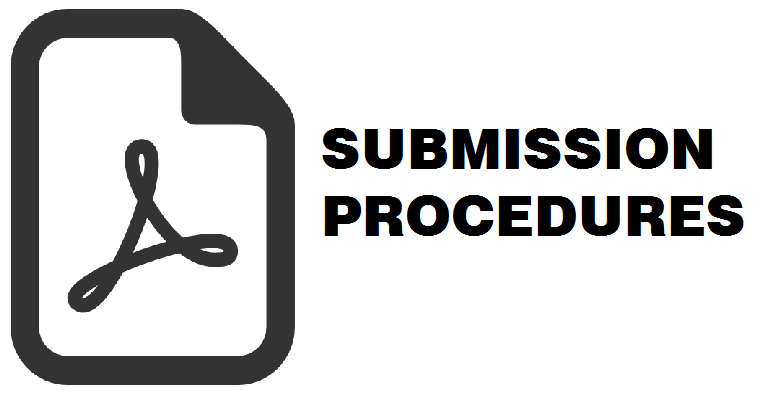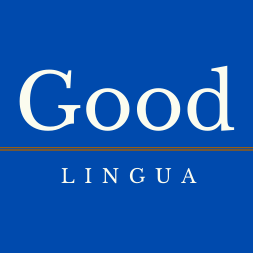Study of the Impact of Rainfall Pattern Dynamics on Carbon Monoxide and Nitrogen Dioxide Using Cloud Computing (Case Study in the Special Region of Yogyakarta, Indonesia)
Sadewa Purba Sejati(1*), Rivi Neritarani(2)
(1) Faculty of Science and Technology, Universitas Amikom Yogyakarta, Indonesia
(2) Faculty of Science and Technology, Universitas Amikom Yogyakarta, Indonesia
(*) Corresponding Author
Abstract
Carbon monoxide (CO) and nitrogen dioxide (NO2) are the primary pollutants found in the air. Based on the results of the study of predecessor researchers, it is known that human activity factors cause spatial and temporal changes in primary pollutants in the air, while natural factors, such as rainfall changes during the transition of seasons, have not been studied further. This study was conducted to examine the impact of rainfall changes on spatial patterns of primary pollutants (CO and NO2). The Special Region of Yogyakarta (DIY), Indonesia was chosen as a research area. The data used were remote sensing data, namely CHRIPS (Climate Hazards Group InfraRed Precipitation with Station data, NRTI (Near Real Time) / L3_CO data, and NRTI / L3_NO2 data. The data were analyzed using cloud computing methods based on Google Earth Engine and statistical analysis. The results showed that the dynamics of rainfall patterns had an impact on changes in CO and NO2 concentrations although it was not significant. Based on the study, it is known that an increase in rainfall of 1% causes a decrease in CO concentration of 1.935 x 10-5 mol/m2 and a decrease in NO2 concentration of 3.151 x 10-9 mol/m2. A study conducted in southern India also concluded that higher rainfall has the potential to reduce CO and NO2 concentrations. The impact of rainfall pattern dynamics presented quantitatively in this study is a new finding, because there have not been many studies that explain the impact of rainfall pattern dynamics on CO and NO2 quantitatively.
Received: 2024-08-24 Revised: 2025-01-02 Accepted: 2025-02-16 Published: 2025-05-26
Keywords
Full Text:
PDFReferences
Adedeji, O. H., Oluwafunmilayo, O., & Oluwaseun, T. A. O. (2016). Mapping of traffic-related air pollution using GIS Techniques in Ijebu-Ode, Nigeria. Indonesian Journal of Geography, 48(1), 76–86. https://doi.org/10.22146/ijg.12488
Ayyamperumal, R., Banerjee, A., Zhang, Z., Nazir, N., Li, F., Zhang, C., & Huang, X. (2024). Quantifying climate variation and associated regional air pollution in southern India using Google Earth Engine. Science of The Total Environment, 909(2024), 168470. https://doi.org/https://doi.org/10.1016/j.scitotenv.2023.168470
Bangsawan, L., Satriagasa, M. C., & Bahri, S. (2021). Improved Performance of the CHIRPS Monthly Rainfall Estimation Extraction from Google Earth Engine (GEE) platform in South Sulawesi Region. In IOP Conference Series: Earth and Environmental Science (Vol. 893, pp. 1–9). IOP Publishing Ltd. https://doi.org/10.1088/1755-1315/893/1/012057
BAPPEDA Daerah Istimewa Yogyakarta. (2019). Kependudukan Kota Yogyakarta (Population of Yogyakarta City). Retrieved from https://pmperizinan.jogjakota.go.id/web/kontent/71/kependudukan#:~:text=Penduduk yang paling padat berada,11.179 jiwa per Km2.
BMKG. (2023). Analsis Hujan Desember 2022 D.I. Yogyakarta. Buletin Prakiraan Hujan Bulanan-Analisis Hujan Desember 2022-Prakiraan Hujan Februari, Maret, April 2023, 42.
Cahyono, E. (2016). Penyebaran Pencemar Udara Di Kota Yogyakarta. In Seminar Nasional Pendidikan dan Saintek (Vol. 2016, pp. 2557–533). Retrieved from http://mirador.gsfc.nasa.gov/
Cheremisinoff, N. P. (2002). Introduction to Air Quality. Handbook of Air Pollution Prevention and Control. NASA’S Applied Remote Sensing Training Program. https://doi.org/10.1016/b978-075067499-7/50002-x
Dewi, A. L., Firmansyah, A., Hirma, E. S., Briliyanto, M. B. A., Fitri, M. N., & Nooraeni, R. (2020). Pengelompokkan Titik Wilayah di Provinsi Daerah Istimewa Yogyakarta Berdasarkan Kualitas Udara Menggunakan Algoritma Fuzzy C-Means. Jurnal MSA ( Matematika Dan Statistika Serta Aplikasinya ), 8(2), 1–12. https://doi.org/10.24252/msa.v8i2.16745
Fardani, I., Tarlani, & Aji, R. R. (2021). Analysis of Changes in Air Quality in Major Cities Indonesia during COVID 19 Using Remote Sensing Data. In IOP Conference Series: Earth and Environmental Science (Vol. 830, pp. 1–15). https://doi.org/10.1088/1755-1315/830/1/012085
Funk, C., Peterson, P., Landsfeld, M., Pedreros, D., Verdin, J., Shukla, S., … Michaelsen, J. (2015). The climate hazards infrared precipitation with stations - A new environmental record for monitoring extremes. Scientific Data, 2(150066), 1–21. https://doi.org/10.1038/sdata.2015.66
Garajeh, M. K., Laneve, G., Rezaei, H., Sadeghnejad, M., Mohamadzadeh, N., & Salmani, B. (2023). Monitoring Trends of CO, NO2, SO2, and O3 Pollutants Using Time-Series Sentinel-5 Images Based on Google Earth Engine. Pollutants, 3(2), 255–279. https://doi.org/10.3390/pollutants3020019
Ghasempour, F., Sekertekin, A., & Kutoglu, S. H. (2021). Google Earth Engine based spatio-temporal analysis of air pollutants before and during the first wave COVID-19 outbreak over Turkey via remote sensing. Journal of Cleaner Production, 319(2021), 1–23. https://doi.org/10.1016/j.jclepro.2021.128599
Halder, B., Ahmadianfar, I., Heddam, S., Mussa, Z. H., Goliatt, L., Tan, M. L., … Yaseen, Z. M. (2023). Machine learning-based country-level annual air pollutants exploration using Sentinel-5P and Google Earth Engine. Scientific Reports, 13(1), 1–19. https://doi.org/10.1038/s41598-023-34774-9
Haque, M. N., Sharif, M. S., Rudra, R. R., Mahi, M. M., Uddin, M. J., & Ellah, R. G. A. (2022). Analyzing the spatio-temporal directions of air pollutants for the initial wave of Covid-19 epidemic over Bangladesh: Application of satellite imageries and Google Earth Engine. Remote Sensing Applications: Society and Environment, 28(10), 1–16. https://doi.org/10.1016/j.rsase.2022.100862
Irwansyah, M., Sunardi, E., Mulyo, A., & Sendjaja, Y. A. (2024). Air and noise pollution analyses near oil and gas fields in the Mahakam Delta, Kalimantan, Indonesia. Indonesian Journal of Geography, 56(1), 148–157. https://doi.org/10.22146/ijg.87454
Islam, M. S., Tusher, T. R., Roy, S., & Rahman, M. (2021). Impacts of nationwide lockdown due to COVID-19 outbreak on air quality in Bangladesh: a spatiotemporal analysis. Air Quality, Atmosphere and Health, 14(3), 351–363. https://doi.org/10.1007/s11869-020-00940-5
Khasanah, U. K., & Nucifera, F. (2022). The Effect of the COVID-19 Pandemic on Nitrogen Dioxide (NO2) Gas Concentration in Yogyakarta Special Province. In 2022 5th International Conference on Information and Communications Technology (ICOIACT) (pp. 210–214). Yogyakarta. https://doi.org/10.1109/ICOIACT55506.2022.9971981
Kwiecien, J., & Szopinska, K. (2020). Mapping Carbon Monoxide Pollution of Residential Area in a Polish City. Remote Sensing, 12(2885), 1–19.
Kwiecień, J., & Szopińska, K. (2020). Mapping carbon monoxide pollution of residential areas in a Polish City. Remote Sensing, 12(18), 1–19. https://doi.org/10.3390/RS12182885
Li, X., Lyu, Y., Dong, W., & Xu, A. (2023). Exploring the relationship between air quality and health shocks to the elderly: A retrospective cross-sectional study in China. Frontiers in Public Health, 11(1), 1–12. https://doi.org/10.3389/fpubh.2023.1087626
Liu, S., Fang, S., Liang, M., Sun, W., & Feng, Z. (2019). Temporal patterns and source regions of atmospheric carbon monoxide at two background stations in China. Atmospheric Research, 220(January), 169–180. https://doi.org/10.1016/j.atmosres.2019.01.017
Mejía C, D., Faican, G., Zalakeviciute, R., Matovelle, C., Bonilla, S., & Sobrino, J. A. (2024). Spatio-temporal evaluation of air pollution using ground-based and satellite data during COVID-19 in Ecuador. Heliyon, 10(7), 1–15. https://doi.org/10.1016/j.heliyon.2024.e28152
Moradi, A., & Zeuss, D. (2023). Investigation of the spatiotemporal patterns of air quality over the metropolitan area of Tehran, using TROPOMI and OMI data. Air Quality, Atmosphere and Health, 17(2024), 1–17. https://doi.org/10.1007/s11869-023-01450-w
Ocampo-Marulanda, C., Fernández-Álvarez, C., Cerón, W. L., Canchala, T., Carvajal-Escobar, Y., & Alfonso-Morales, W. (2022). A spatiotemporal assessment of the high-resolution CHIRPS rainfall dataset in southwestern Colombia using combined principal component analysis. Ain Shams Engineering Journal, 13(5), 1–13. https://doi.org/10.1016/j.asej.2022.101739
Pohan, A. F., Sismanto, S., Nurcahya, B. E., Lewerissa, R., Koesuma, S., Saputro, S. P., … Adhi, M. A. (2023). Utilization and modeling of satellite gravity data for geohazard assessment in the Yogyakarta area of Java Island, Indonesia. Kuwait Journal of Science, 50(4), 499–511. https://doi.org/10.1016/j.kjs.2023.05.016
Rahaman, S. N., Ahmed, S. M. M., Zeyad, M., & Zim, A. H. (2023). Effect of vegetation and land surface temperature on NO2 concentration: A Google Earth Engine-based remote sensing approach. Urban Climate, 47(2), 1–16. https://doi.org/10.1016/j.uclim.2022.101336
Rahmawati, N., Rahayu, K., & Yuliasari, S. T. (2021). Performance of daily satellite-based rainfall in groundwater basin of Merapi Aquifer System, Yogyakarta. Theoritical and Applied Climatology, 146(2021), 173–190.
Rendana, M., Idris, W. M. R., & Rahim, S. A. (2022). Changes in air quality during and after large-scale social restriction periods in Jakarta city, Indonesia. Acta Geophysica, 70(5), 2161–2169. https://doi.org/10.1007/s11600-022-00873-w
Riasasi, W., & Sejati, S. P. (2019). Potential of Groundwater to Supply Domestic Water Necessity in Evacuation Shelters of Merapi Volcano Eruption. In IOP Conference Series: Earth and Environmental Science (pp. 1–11). IOP Publishing Ltd. https://doi.org/10.1088/1755-1315/271/1/012014
Sejati, S. P., & Neritarani, R. (2024). The Impact of Land Use Change on Groundwater Depth in The Groundwater Transition Zone of Merapi Volcano, Yogyakarta, Indonesia. Indonesian Journal of Geography, 56(1), 96–115. https://doi.org/10.22146/ijg.88452
Sentolo, K. (2019). Monografi Kapanewon Sentolo (Kapanewon Sentolo Monograph). Retrieved 04/19/2024 from https://sentolo.kulonprogokab.go.id/detil/157/monografi
Suhardono, S., Septiariva, I. Y., Rachmawati, S., Matin, H. H. A., Qona’ah, N., Nirwana, B., … Prayogo, W. (2023). Changes in the Distribution of Air Pollutants (Carbon Monoxide) during the Control of the COVID-19 Pandemic in Jakarta, Surabaya, and Yogyakarta, Indonesia. Journal of Ecological Engineering, 24(4), 151–162. https://doi.org/10.12911/22998993/159508
Suharman, Y., Sejati, S. P., & Amirullah, I. (2023). Understanding the carbon monoxide threat in the South China Sea. Regions and Cohesion, 13(3), 29–47. https://doi.org/10.3167/RECO.2023.130303
Volke, M. I., Abarca-del-Rio, R., & Ulloa-Tesser, C. (2023). Impact of mobility restrictions on NO2 concentrations in key Latin American cities during the first wave of the COVID-19 pandemic. Urban Climate, 48(2), 1–16. https://doi.org/10.1016/j.uclim.2023.101412
Wates, K. (2021). Monografi Kapanewon Wates (Kapanewon Wates Monograph). Retrieved from https://wates.kulonprogokab.go.id/detil/464/profil-2021
Xing, H., Zhu, L., Chen, B., Niu, J., Li, X., Feng, Y., & Fang, W. (2022). Spatial and temporal changes analysis of air quality before and after the COVID-19 in Shandong Province, China. Earth Science Informatics, 15(2), 863–876. https://doi.org/10.1007/s12145-021-00739-7
Yogyakarta, D. P. P. (2023). Transportasi Dalam Angka 2023. Laporan Transportasi dalam Angka 2023.
Article Metrics
Refbacks
- There are currently no refbacks.
Copyright (c) 2025 Authors and Indonesian Journal of Geography

This work is licensed under a Creative Commons Attribution-NonCommercial 4.0 International License.
The Indonesian Journal of Geography (ISSN 2354-9114 (online), ISSN 0024-9521 (print)) is an international journal published by the Faculty of Geography, Universitas Gadjah Mada in collaboration with The Indonesian Geographers Association. The content of this website is licensed under a Creative Commons Attribution-ShareAlike 4.0 International License
Accredited Journal, Based on Decree of the Minister of Research, Technology and Higher Education, Republic of Indonesia Number 225/E/KPT/2022, Vol 54 No 1 the Year 2022 - Vol 58 No 2 the Year 2026 (accreditation certificate download)










